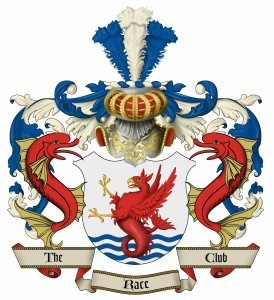Courtesy of Gary Hall Sr., 10-time World Record Holder, 3-time Olympian, 1976 Olympic Games US Flagbearer and The Race Club co-founder.
At The Race Club, we practice an important backstroke swimming drill that helps swimmers increase their speed and energy of the backstroke body rotation, all of which lead to a faster backstroke. A quick rotation of the body from side to side during the underwater pull is one of the key techniques that a swimmer can use to develop a faster backstroke. The faster the rotation of the swimmer’s body, the more kinetic energy can be coupled to the pull and kick to make them more effective.
In order to learn an efficient backstroke we believe it is important to practice a variety of backstroke swimming drills. Good backstroke body rotation is not only beneficial for the coupling energy that it provides, but this technique also enables the swimmer to bend the elbow more in the pulling motion underwater. Similar to the high elbow in freestyle, the bent elbow in backstroke reduces frontal drag, but it also increases the propulsion when compared to a straighter-armed pull. Bending the elbow to 120 degrees or more without rotating the body will result in the hand breaking the surface of the water and losing power.
Watching world champion Junya Koga performing the body rotation backstroke swimming drill, you will see how powerful the body rotation can be when coupled with the kick or the pull. Practice this drill often. Develop a strong core to enable you to rotate quickly and you will begin to see great improvement in your backstroke speed.

Gary Hall, Sr., Technical Director and Head Coach of The Race Club (courtesy of TRC)
Like The Race Club on Facebook
Follow The Race Club on Instagram
Follow The Race Club on Twitter
Connect to The Race Club / Gary Hall Sr. on Linkedin
THE RACE CLUB
Because Life is Worth Swimming, our mission is to promote swimming through sport, lifelong enjoyment, and good health benefits. Our objective is for each member of and each participant in The Race Club to improve his or her swimming performances, health, and self-esteem through our educational programs, services and creativity. We strive to help each member of The Race Club overcome challenges and reach his or her individual life goals.
 The Race Club provides facilities, coaching, training, technical instruction, video, fitness and health programs for swimmers of all ages and abilities. Race Club swim camps are designed and tailored to satisfy each swimmer’s needs, whether one is trying to reach the Olympic Games or simply improve one’s fitness. Our programs are suitable for beginner swimmers, pleasure swimmers, fitness swimmers, USA swimming or YMCA swimmers, or triathletes; anyone who wants to improve swimming skills. All of our Race Club members share an enjoyment of being in the water and use swimming to stimulate a more active mind and body.
The Race Club provides facilities, coaching, training, technical instruction, video, fitness and health programs for swimmers of all ages and abilities. Race Club swim camps are designed and tailored to satisfy each swimmer’s needs, whether one is trying to reach the Olympic Games or simply improve one’s fitness. Our programs are suitable for beginner swimmers, pleasure swimmers, fitness swimmers, USA swimming or YMCA swimmers, or triathletes; anyone who wants to improve swimming skills. All of our Race Club members share an enjoyment of being in the water and use swimming to stimulate a more active mind and body.
Exactly! I like what Matt Grevers uses as a queue for backstroke rotation, referring to the pulling hand: “make sure that, by the time the pulling hand reaches your hip, that (via rotation) your hip has already moved out of its way”. Looking forward to the rest of the progression, Gary!
Does that make sense? Shouldnt the finish of the stroke cause the hip to rotate. The way I think of it is that the hand is shallow until the finish. At the finish it goes deep and causes the hips to rotate.
The body rotation does occur during the pulling motion for both freestyle and backstroke, albeit it at maximum angular velocity a bit later in backstroke than in freestyle. In backstroke, the motion of the rotation is away from the pulling arm, while in freestyle, it is toward the pulling arm. Either way, the kinetic energy of the rotating body provides a coupling with the pull (and kick) to make them more effective…ie more distance per stroke. Hope this helps.
Thanks for the video. The shoulder angle explanation is especially helpful: being on your right side during your right-arm backstroke pull puts your shoulder in a more powerful position. Applied to freestyle, the same argument favors something very different: rotating toward your *left* side during your right-arm pull. It may help swimmers to note that rotation works differently in backstroke and freestyle. In backstroke, you stay on your pulling side during most of the pull, then rotate at the very end of the pull; in freestyle, you rotate away from your pulling side during the pull.
I guess this depends on how you define which “side” the swimmer is “on”: if it’s the one in front of the swimmer (whichever one is facing the same direction as his face), then both freestyle and backstroke involve rotation onto the non-pulling side during the first phases of the pull. The difference would be that in backstroke, this rotation must be reversed before the pulling hand exits the water.